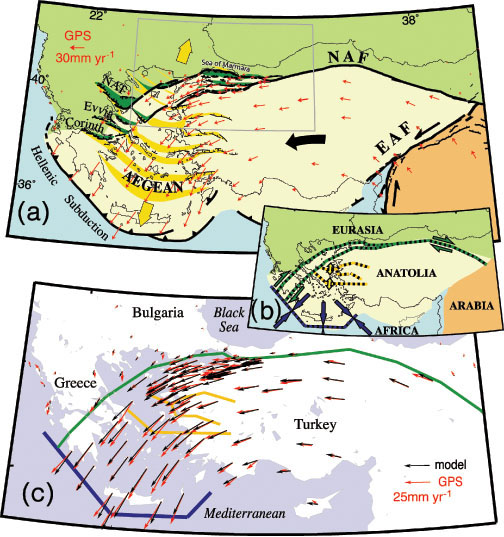看
看
看
The Anatolian extrusion is similar to experiments in plasticine carried out by Peltzer et al. (C.r. Acad. Sci. Paris, 294, 1341-1348, 1982). The indentor is applied to a free boundary at the base and the system is free to move westward. As deformation evolves a left-lateral fault first appears in the east. It is then cross cut by a right lateral fault that propagates toward the free boundary in the west. The photograph is from the original experiment of Pelzer et al. (1982).

看



The Anatolian block (a) escapes to the east as a result of the collision between Eurasia and Arabia. The block is bounded to the north by the North Anatolian fault (NAF) and to the east by the East Anatolian fault (EAF), and to the south by the Hellenic subduction zone. Yellow feature indicate structure that have been active in the last 15 Myr. Structures shown in dark green have been re-activated by the NAF propagating into the region. Red arrows are GPS vectors (McClusky et al., JGR, 2000). In b the structures used to model GPS velocity field. In (c) the model reproducing the Anatolia/Eurasia kinematics.


From Fleurit et al. GJI (2003) 154 1-7
From Hubert- Ferrari et al. GJI 153 (2003) 111-132
看
看
